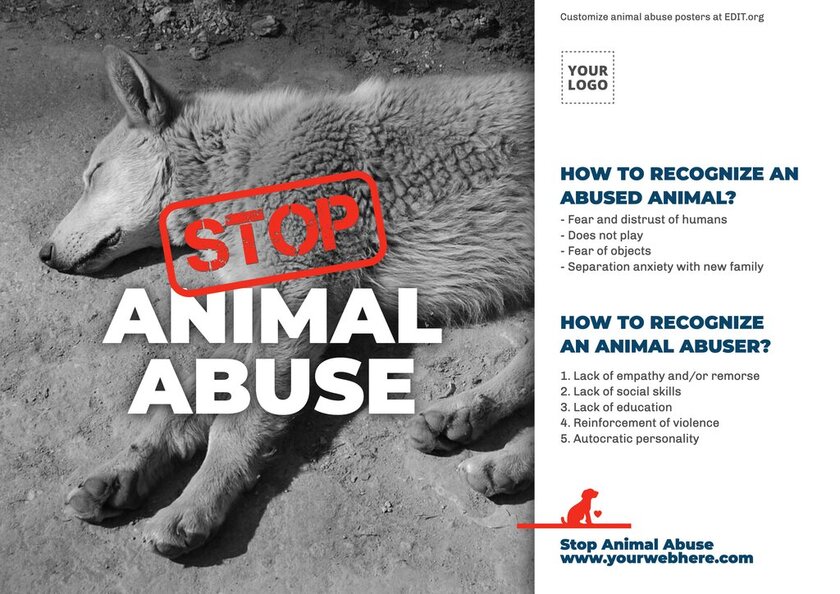Animal cruelty is a somber and multifaceted issue that permeates various layers of society, manifesting in forms that range from the insidious neglect observed in homes to the glaring abuse endemic in industrial practices. Understanding the myriad types of animal cruelty not only enlightens the public but also galvanizes the collective effort to combat this pressing societal ill. By delving into the harrowing dimensions of neglect and abuse, we can cultivate a climate of compassion and advocate for the voiceless beings that share our planet.
The first category of animal cruelty often encountered is household neglect. This form of cruelty, while frequently overlooked, is no less devastating. Imagine a withered plant, once vibrant and flourishing, now starved of sunlight and water; much like this plant, neglected animals suffer silently in dim corners of exacerbated circumstances. Owners may fail to provide the basic necessities—adequate food, clean water, proper shelter, or essential veterinary care. Instances abound, where animals are tethered to chains, manifesting both physical and emotional scars that may never heal. The heart-wrenching cries of a malnourished dog serve as a lamentation—echoing the emotional devastation that accompanies their plight.
Furthermore, abandonment serves as a profound testament to domestic cruelty. A once-beloved pet, now discarded like refuse, is left to navigate an unforgiving world alone. Consider the metaphor of a ship adrift at sea—without a captain or a port, it faces inevitable doom. Abandonment leaves animals vulnerable to starvation, disease, and potential harm from other creatures or humans alike. This purgatorial existence, devoid of comfort and companionship, encapsulates a form of emotional cruelty that is insidious and heartbreaking.
The escalation of cruelty finds its way into another insidious realm: hoarding. Individuals afflicted by this psychological disorder may find themselves surrounded by a multitude of animals, their good intentions spiraling into chaos. These creatures often live in squalid conditions, deprived of proper care, attention, and socialization. The cacophony of distressing sounds reverberates through these grim sanctuaries, mirroring an ecosystem in collapse. Much like a dilapidated house teetering on the edge of destruction, hoarding represents the veritable decay of both the living space and the lives it encompasses.
Moving beyond the realm of households, industrial abuse emerges as a stark representation of cruelty on a grand scale. This type of abuse is largely systemic, entrenched within the machinery of commercial operations. Factory farming exemplifies this brutality, where animals are often treated as mere commodities rather than sentient beings. The metaphor of a cog in a machine is apt; these creatures are subjugated to a life devoid of agency, confined within cramped spaces that stifle their natural instincts and behaviors. The constant clamor of machinery and the acrid stench of waste paint a grim tableau, far removed from any semblance of ethical husbandry.
Research laboratories represent another arena where animal cruelty flourishes under the guise of scientific advancement. The chilling idea of creatures confined in sterile cages, subjected to painful experiments while their cries for help go unheard, portrays a haunting dichotomy of progress and barbarism. Each test, each trial, becomes a step deeper into an abyss of suffering. The ends too often are deemed justifiable, obscuring the profound moral questions raised by such practices. Here, animals become unwitting subjects in a grand experiment, stripped of autonomy and integrity.
The specter of entertainment-related cruelty cannot be overlooked. The exploitation of animals in circuses, aquariums, and zoos often masquerades as a form of education and amusement. However, the reality is a suffocating regime—where majestic beasts and vibrant creatures are paraded under the oppressive thumb of human manipulation. The metaphor of a gilded cage rings true: aesthetically pleasing yet inherently restrictive. The glaring spotlight may momentarily mask the suffering endured, but the truth remains; behind the curtain lies despair.
Moreover, the cruel undercurrents of poaching and wildlife trafficking represent abhorrent violations of nature’s intrinsic balance. These activities decimate populations of endangered species, driven by greed for exotic pets, ornamental items, or traditional medicines. Picture a vibrant tapestry woven from diverse threads, now unraveled by ruthless hands. The disappearance of a single thread can compromise the entire fabric of an ecosystem, underscoring the profound consequences of such abuse. Each felled creature ripples through the environment, accelerating a cascade of ecological destruction.
Sadly, societal apathy often fuels the continuity of these types of animal cruelty. Enlightenment comes not only from awareness but also from action. It is disheartening to witness the normalization of neglect, the acceptance of factory farming, and the commodification of living beings. We, as custodians of this planet, hold a sacred responsibility to protect and advocate for the animals in our care and those beyond our grasp.
Through education, advocacy, and engagement, humanity can shift the narrative from one of cruelty to compassion. To abolish animal cruelty is to cultivate a society that appreciates the depth of connection between all living beings, recognizing shared sentiment and empathetic responsibility. As we close this discourse on the types of animal cruelty, let each heart of flesh be ignited with the fervor for change. Not only should we dismantle the ugly tapestry of abuse, but also weave a new narrative that honors the beauty of existence—together as allies for all sentient life.








